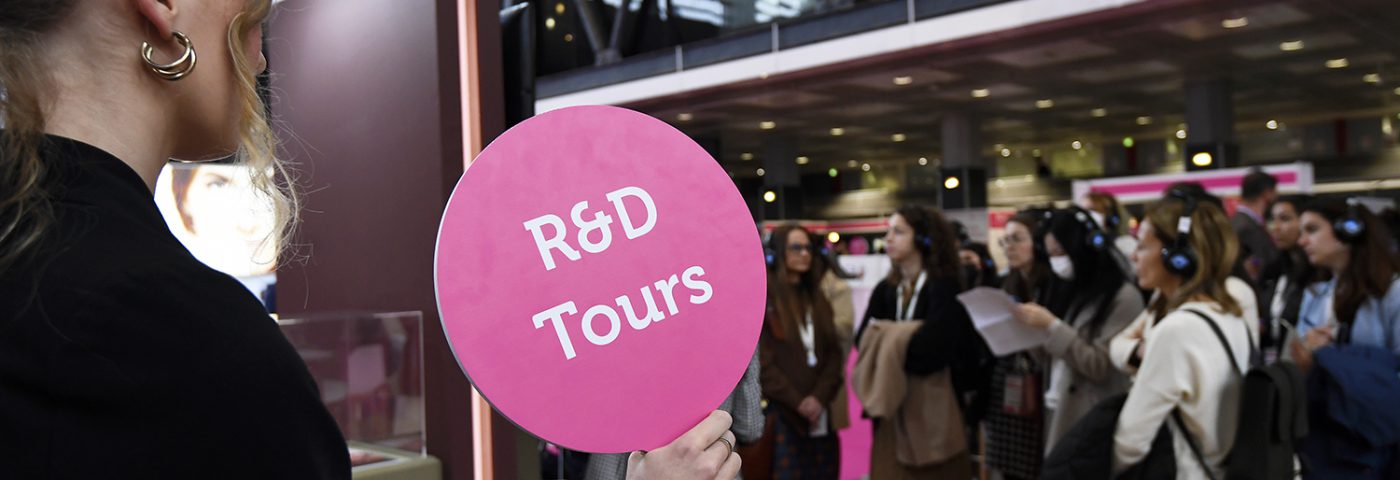It seems like only yesterday we were planning and preparing for in-cosmetics Global 2020, it was set to be a spectacular show, celebrating 20 years since the start of in-cosmetics. Little did we know, we would be hit with something that would change the fate of all events for the next two years!
Fast forward to present times, we are celebrating the return of this brilliant show after an extended absence, in-cosmetics Global 2022 was a pure delight. I won’t be the only one who was feeling a little anxious and apprehensive before the show. It’s quite daunting after spending 2 years away from social interactions to then be integrated with thousands of new people; and then the thought of ‘what if people don’t show up’ definitely crossed my mind.
As scientists and formulators, I’m sure we can all relate to this point – product development is not as straightforward as we’d like it to be. There are so many things to consider like creating an effective product that is kind to the environment whilst still being commercially viable (this can seem impossible at times). Our industry as a whole is trying its hardest to take some steps toward saving the planet whilst also creating some brilliant, innovative ingredients which aim to support the sustainability movement.
For those who don’t know me, I am Rouah; a pharmaceutical scientist turned cosmetic scientist. I create, organise and lead the R&D Tours for in-cosmetics Global and Asia. I research the ingredients and decide what I think people will find interesting and useful for their upcoming projects. Our tour topics this year were Suncare & Skin Protection sponsored by Symrise, Naturals sponsored by Mibelle and Good for the Mind & Body Sponsored by Codif. We saw a really interesting range of ingredients from some brilliant exhibitors.
Although the R&D Tour topics differed there were some definite trends weaving through which tied them together. The first one I’ll mention is Green Chemistry. The Royal Society of Chemistry defines green chemistry as the “design of chemical products and processes to reduce or eliminate the use and generation of hazardous substances.” Simply put, it efficiently uses renewable raw materials thus eliminating waste and avoiding the use of toxic and hazardous reagents and solvents in the manufacture and application of chemical products and ingredients. Since our industry is often targeted and blamed for waste and damage to the environment, this is a good step in the right direction and we hope to see more and more ingredients being produced through the utilisation of green chemistry.
This leads me on to the next trend; microalgae. There were many companies singing the praises of these biotechnologically derived marine ingredients developed for use in a variety of personal care products. The qualities that enable these microalgae to perform so well and fulfil a number of functions can be credited to the environment in which they are found. These organisms produce valuable metabolites as a result of being constantly exposed to stressful conditions such as high or low temperature, high salinity, osmotic pressure, photo-oxidation, and ultraviolet radiation.
As a result of these stressors, microalgae derivatives can be used to achieve certain results in skincare products; in particular products which target skin healing and repair, reducing inflammation and protection from UV damage. I would also say that it is a pro-ageing approach to skincare. Since many people are turning to more natural cosmetic products, microalgae derived cosmetic products are very desirable with the added benefit of being environmentally friendly.
Our final trend is the microbiome; the human microbiome refers to the plethora of microbes found in and on the body. These microbes form ecological communities called microbiota, the human microbiota includes hundreds of species of bacteria, fungi, mites and viruses. Every single person has a different skin microbiota and even on one person’s body, there are different environments depending on the area we are looking at. There is still so much to learn on this topic but If we try to understand how microbes interact with our skin, we can enhance our product development by being able to cater more specifically to these ecological communities.
Green chemistry is on the rise and we will hopefully be seeing an increase in the number of ingredients being developed through this process, including marine derived ingredients and ingredients targeted to support the microbiome. So although we have discussed these concepts and referred to them as trends, it seems they are here to stay.
Enjoyed this article? Get more by subscribing to our newsletter!
Feeling inspired to see ingredients and trends in action?
Then why not visit one of the in-cosmetics events around the world?

